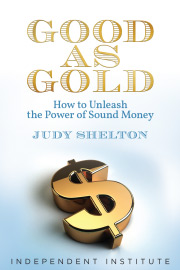How will the Russian invasion of Ukraine affect U.S. monetary policy?
Begin with the Federal Reserve’s most pressing challenge: inflation. Gasoline prices, which account for 4% of the overall consumer-price index, had already increased in the 12 months to December 2021 more than any other good or service in the CPI basket—some 51% for regular unleaded gas at the pump. The war in Ukraine, and the West’s response to it, will drive dramatic further increases in energy prices and push the CPI even higher.
Prolonged financial-market uncertainty caused by “geopolitical risk” could be as damaging to the American economy as rising inflation. Uncertainty increases rapid trading moves and rattles stock, bond and commodity markets. In combination with already-frayed nerves over pending interest-rate hikes and continuing supply-chain issues, the opportunity to sow market instability grants Vladimir Putin a degree of leverage over American economic prospects.
A 2018 discussion paper prepared for the Fed Board of Governors defined geopolitical risk as “risk associated with wars, terrorist acts, and tensions between states that affect the normal and peaceful course of international relations.” The study concludes that “exogenous changes in geopolitical risks depress economic activity and stock returns in advanced economies, most notably in the United States.” Importantly, the analysis points out that “these adverse effects are sparked by heightened threats of adverse geopolitical events, rather than their realization.”
This factor—the capacity to threaten—plays to Russia’s advantage. Portfolios are melting at the prospect of the conflict spreading. Fortunately Fed officials have indicated some awareness of Mr. Putin’s readiness to wage asymmetrical financial warfare. The minutes from the Fed’s monetary-policy meeting held Jan. 25-26 include a reference to “escalating tensions between Russia and Ukraine” as having weighed on equity prices. They also cite “the possibility of geopolitical turmoil that could cause increases in global energy prices or exacerbate global supply shortages.” Further allusions to “developing financial and international developments” are more muted.
Now the two countries are at war, as the next Federal Open Market Committee meeting looms on March 15-16. To confront the surge in domestic inflation, Fed officials have been signaling their resolve to phase out easy money by raising interest rates. That would spook equity markets and reduce aggregate demand by curbing economic activity. It’s one thing to accept the depressed economic activity and stock returns that higher rates bring in a deliberate attempt to slay inflation and achieve price stability. But it’s another thing entirely to suffer such misery because a callous nation insists on invading its neighbor.
The Fed may be tempted to hedge its bets. Its role as lender of last resort is often justified by the possibility of exogenous shocks to the economy. The Fed typically responds to such shocks with highly accommodative policy. But it shouldn’t in this case. Instead, policy makers should play to the American economy’s strengths. The U.S. has the world’s most trusted reserve currency and its deepest financial markets.
The Fed has a responsibility to ensure the integrity of the dollar. In response to the Covid emergency, fiscal and monetary stimulus measures were employed to excess. Now is the time for central bankers to address the swollen money supply and demonstrate the Fed’s resolve to fulfill the mandate of stable prices.
Two options for reducing inflation through higher interest rates are available to the Fed: raising its administered rates or selling some of its balance-sheet holdings. The former approach would benefit commercial banks by paying them a higher rate of interest on the reserve balances they hold in depository accounts at the Fed. Money-market funds would also earn more interest on overnight reverse-repurchase agreement balances. The funds used by the Fed to pay interest on these balances come out of its own portfolio earnings, which are otherwise remitted back to the Treasury as revenue to the federal budget. American taxpayers might wonder why commercial banks, including the foreign-owned, should collect higher interest on money sitting idle at the Fed.
It would be better if the Fed engaged in more traditional open market operations, reducing its trove of Treasury securities ($5.7 trillion) and mortgage-backed securities ($2.7 trillion)—not only to increase their supply to the market but also to reduce the Fed’s own footprint in financial markets. The Fed’s massive purchases of government-backed securities, more than $4.5 trillion since March 2020, have obscured price signals and distorted investment returns; its holdings should be downsized.
Russia’s belligerence has roiled markets, and international capital is looking for a haven in the U.S. The Fed’s efforts to raise rates may be somewhat offset by these inflows, but engaging with markets and restoring price discovery as the means for determining appropriate interest rates will be a net benefit to the economy.
Free markets are America’s strength. They enhance financial transparency by providing a window on aggregate expectations about developments. The Fed’s immense capacity to provide dollar liquidity as needed around the world remains a powerful tool in its emergency arsenal—one that can be tapped to send the message that foreign agitators can’t manipulate U.S. monetary policy.









